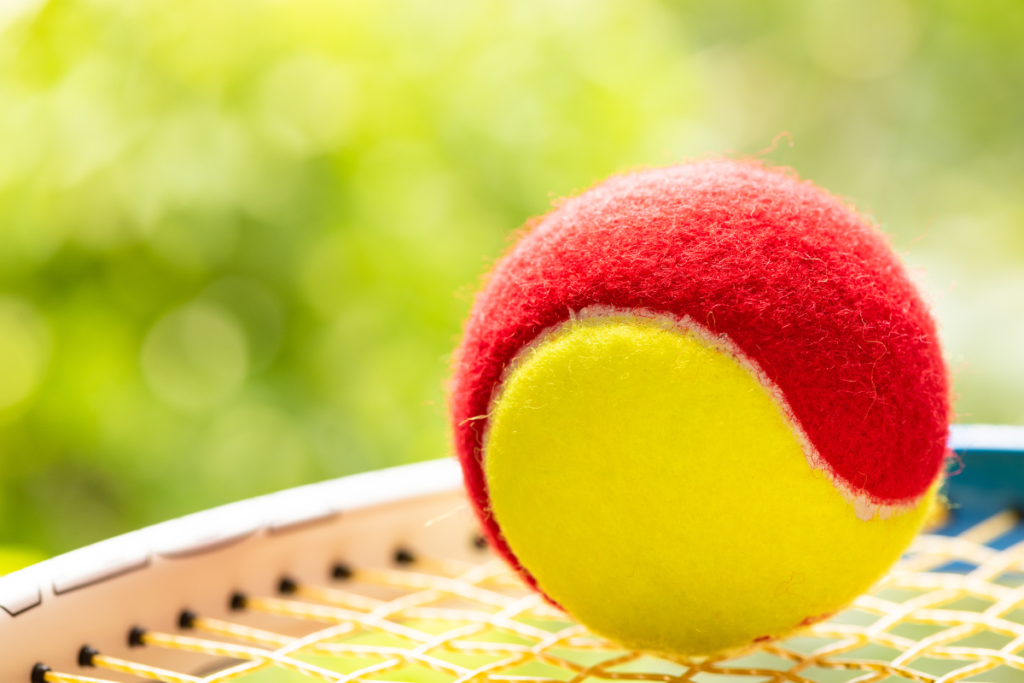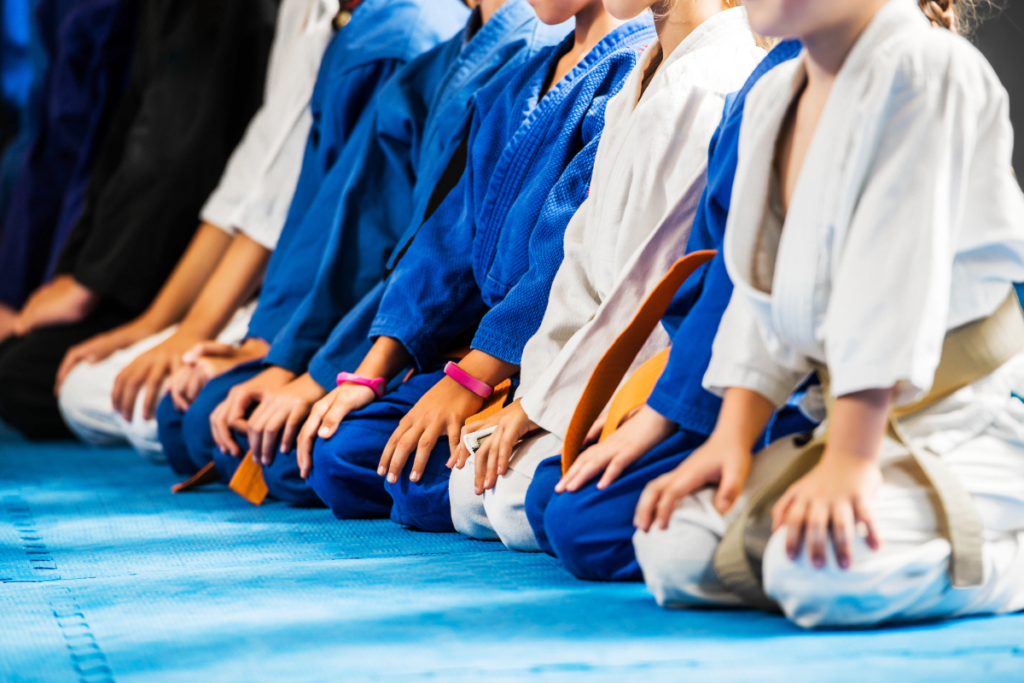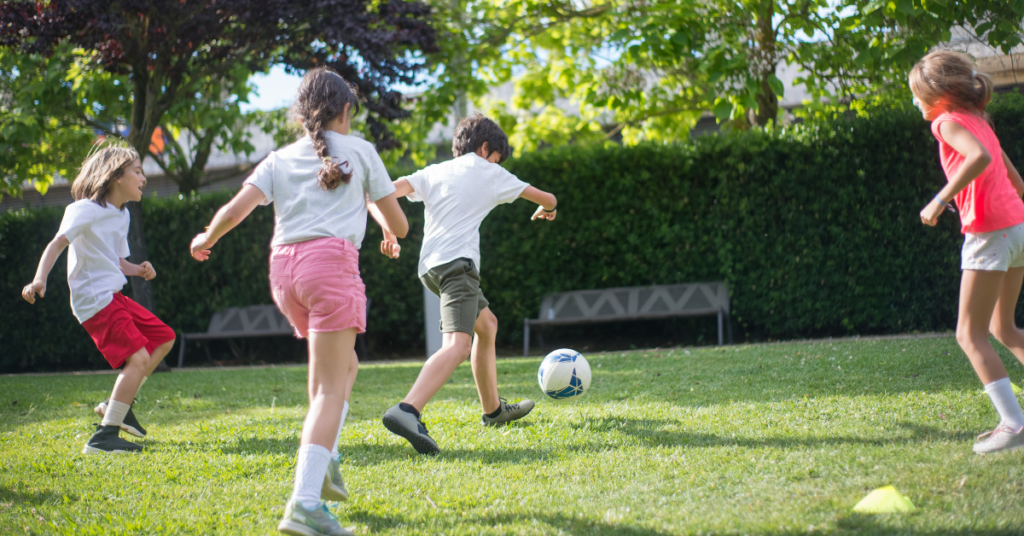Every parent wants to see their child grow up healthy, happy, and full of confidence—and one of the most effective ways to support that growth is through sports. But with so many options out there, how do you know which activities are the best sports for kids?
Sports do more than just keep kids active—they play a powerful role in overall development. The right sport can teach children how to move with purpose, think strategically, work as a team, and believe in themselves. In fact, incorporating sports for child development from an early age can help build key physical skills like strength, balance, and coordination, while also fostering mental and emotional growth.
From mastering motor skills to developing social confidence, the benefits of sports for kids go far beyond the playing field. Children who engage in regular physical activity tend to have better focus in school, improved emotional regulation, and a stronger sense of discipline and self-worth. Plus, staying active early in life helps create healthy habits that can last a lifetime.
So, let´s explore 7 of the best sports that are especially effective for building strength, coordination, and confidence in kids. Whether your child loves being part of a team or prefers individual activities, you’ll find the perfect match to support their growth and development.
7 Best Sports for Kids
1. Gymnastics
Best for: Strength, flexibility, balance, coordination, and body awareness
Why it’s great:
Gymnastics is often called the foundation sport—and for good reason. It teaches kids how to move their bodies with strength and control, which can help them excel in almost any other sport later on. From an early age, kids learn how to roll, jump, balance, swing, and land safely, which builds not only physical abilities but also body awareness and spatial understanding.
This sport focuses heavily on core strength, which is essential for posture, injury prevention, and overall stability. It also improves flexibility, which is especially important for growing bodies to stay agile and mobile. Gymnastics trains both gross motor skills (like jumping and running) and fine motor skills (like precise hand and foot placement), making it one of the most comprehensive sports for child development.
Beyond the physical benefits, gymnastics is a fantastic way to build confidence and resilience. Kids work through progressions, starting with basic movements and slowly advancing to more complex skills. This step-by-step approach teaches patience, determination, and the joy of accomplishing something that once felt impossible. Every new skill mastered—whether it’s a forward roll or a handstand—feels like a mini victory.
Plus, gymnastics can be practiced as a solo sport or in group classes, making it suitable for kids with different personalities—whether they thrive on performing or prefer focusing on personal growth.
In short: Gymnastics is a powerful tool for building strong, capable, and confident kids, both inside and out.
2. Tennis

Best for: Hand-eye coordination, agility, focus, strategic thinking, and self-discipline
Why it’s great:
Tennis is often called the “sport for a lifetime”—and starting young gives kids a huge head start in developing both physical and mental skills that they can carry with them forever. It’s an excellent choice for children who enjoy one-on-one competition or smaller team formats like doubles.
Physically, tennis improves hand-eye coordination like no other sport. Kids learn to time their movements precisely to strike the ball, which boosts reflexes, balance, and body control. It also builds quick footwork, agility, and core strength, as they constantly move, pivot, and react across the court.
Tennis is also a workout for the brain. Each rally and serve requires focus, planning, and strategic thinking. Players must make quick decisions and anticipate their opponent’s moves—developing mental sharpness and patience. These skills can easily translate into better performance in school and other activities that require concentration and discipline.
Unlike high-contact sports, tennis allows kids to compete in a controlled, low-risk environment while still experiencing the thrill of competition. And because players are responsible for managing their own side of the court, tennis helps build independence, accountability, and self-motivation.
Another major benefit is that tennis can be played both recreationally and competitively, giving kids room to grow at their own pace. Whether they’re in it for fun or dreaming of a future in tournaments, tennis supports a healthy mindset around personal progress and goal-setting.
In short: Tennis teaches kids how to stay sharp, move fast, and think ahead—all while having fun and staying fit.
3. Swimming
Best for: Endurance, full-body strength, coordination, cardiovascular health, and lung capacity
Why it’s great:
Swimming is one of the most well-rounded sports for kids—it’s fun, safe (once they learn the basics), and incredibly effective for building physical fitness. Because water adds resistance without impact, swimming provides a low-stress, high-benefit workout that strengthens nearly every muscle group. It builds upper and lower body strength, tones the core, and enhances flexibility—all while being gentle on growing joints and bones.
One of the key benefits of swimming is the development of cardiovascular endurance and lung capacity. As kids learn to control their breathing and move rhythmically through the water, they naturally build stamina, improve circulation, and increase their overall aerobic fitness. This helps not only in the pool but in other activities as well, from running at recess to participating in team sports.
Swimming also plays a major role in improving coordination and motor skills. The sport requires the arms, legs, and breathing to work in sync—helping children develop timing, rhythm, and full-body awareness. Over time, this enhances overall agility and body control.
Mentally, swimming offers a calming and therapeutic effect, which makes it especially beneficial for kids with anxiety, sensory sensitivities, or those who simply need a peaceful environment to thrive. The water creates a soothing space where kids can relax while still getting a great workout. It’s also ideal for shy or introverted children who may not feel comfortable in high-contact or team-heavy sports.
And let’s not forget—learning to swim is a life-saving skill. Teaching kids how to be confident and safe in the water is one of the best gifts you can give them.
In short: Swimming builds strong bodies, calm minds, and critical life skills—making it a top sport for kids of all ages and personalities.
4. Martial Arts (Karate, Taekwondo, Judo)

Best for: Discipline, focus, self-control, coordination, strength, and self-esteem
Why it’s great:
Martial arts are so much more than kicks and punches—they’re a powerful tool for shaping both the body and the mind. Whether it’s Karate, Taekwondo, Judo, or another style, martial arts teach kids discipline, respect, and inner strength, all while helping them become stronger, more confident individuals.
Physically, martial arts help improve balance, agility, coordination, and muscle tone. Many moves require precise body control and timing, which enhances overall motor skills. Kicks and stances build leg strength, while punches and blocks strengthen the upper body and core. Unlike team sports where kids might get lost in the crowd, martial arts allow each child to progress at their own pace—making it ideal for building confidence in both outgoing and more reserved kids.
But perhaps the most powerful benefits are mental. Martial arts emphasize focus, patience, and goal-setting, which are crucial life skills both on and off the mat. Kids learn to listen carefully, follow instructions, and stay committed over time—especially as they train toward earning the next belt level. Each advancement represents a clear, tangible goal, giving children a strong sense of achievement and pride in their progress.
Instructors also place a strong focus on respect for others, self-discipline, and emotional regulation, which helps kids manage frustration and build resilience. This structure and consistency can be especially helpful for children who need more routine or struggle with attention and self-control.
And let’s not forget—martial arts also teach self-defense skills in a responsible, non-aggressive way. Kids learn to stay calm under pressure, which can contribute to greater self-assurance in social situations.
In short: Martial arts help kids become physically capable, mentally focused, and emotionally strong—making it one of the most balanced sports for total child development.
5. Soccer
Best for: Teamwork, agility, endurance, coordination, and communication
Why it’s great:
Soccer is one of the most popular sports in the world—and for good reason. It’s fast-paced, exciting, and easy for kids to pick up and play. But beyond the fun and energy, soccer is packed with benefits for both physical and social development.
Physically, soccer is excellent for building cardiovascular endurance, leg strength, and agility. With constant movement across the field, kids improve their speed, balance, and coordination as they run, pass, and shoot the ball. Because the game requires quick decision-making and fast reactions, it also sharpens reflexes and develops spatial awareness.
Soccer is a true team sport, which means children learn to work together, support their teammates, and understand their role within a group. These are essential social skills that extend beyond the field—like cooperation, empathy, and clear communication. Kids quickly learn that success comes not from going it alone, but from trusting and collaborating with others.
Another great benefit? Soccer offers opportunities for kids of all skill levels and personalities. More competitive players can join leagues and tournaments, while casual players can still have a blast during after-school games or weekend clubs. The accessibility of soccer—requiring minimal equipment and space—makes it a sport that any child can enjoy, regardless of background.
On a deeper level, soccer helps build confidence and resilience. Whether kids score a goal, make a smart pass, or recover from a mistake, they’re constantly learning, improving, and discovering what they’re capable of.
In short: Soccer helps kids develop physical strength, social confidence, and teamwork skills—while having a blast chasing the ball with friends.
6. Dance
Best for: Balance, coordination, rhythm, flexibility, creativity, and self-expression
Why it’s great:
Dance is a fantastic blend of physical fitness and artistic expression, making it one of the most well-rounded activities for children. Whether it’s ballet, hip-hop, jazz, contemporary, or even breakdancing, dance helps kids move with purpose and confidence—while also allowing them to express their unique personality and creativity.
Physically, dance develops strong posture, graceful movement, and muscle control. It strengthens the legs, core, and back, improves flexibility, and boosts overall coordination. Learning choreography requires kids to remember steps and timing, which sharpens their memory and concentration as well.
One of the biggest benefits of dance is that it connects physical movement with rhythm and music, teaching kids how to listen and move in sync. This builds a strong sense of timing, rhythm, and spatial awareness, which supports many other sports and physical activities.
But beyond the physical gains, dance is a powerful builder of confidence and emotional intelligence. Performing in front of an audience—even in a small recital—helps kids overcome shyness, celebrate their progress, and feel proud of their hard work. It also offers a safe outlet for expressing feelings and telling stories through movement, which is especially valuable for children who find it hard to communicate verbally.
Dance classes often promote a sense of community and teamwork, as dancers learn to perform together, support one another, and celebrate each other’s improvements. And for kids who prefer creativity over competition, dance offers a wonderful space to shine without pressure.
In short: Dance supports physical strength, emotional growth, and creative confidence—making it a joyful and empowering sport for kids of all ages.
7. Basketball
Best for: Coordination, teamwork, speed, focus, and confidence
Why it’s great:
Basketball is an energetic, fast-paced sport that keeps kids moving, thinking, and working together. It’s ideal for building hand-eye coordination, endurance, and agility, while also teaching valuable social and leadership skills that extend far beyond the court.
Physically, basketball involves constant movement—running, jumping, pivoting, dribbling, and shooting—which gives kids a full-body workout. It builds leg strength from quick sprints and direction changes, enhances upper body power through passing and shooting, and improves core stability as players stay balanced on the move. The quick, repetitive actions also sharpen reflexes and motor skills.
Basketball is especially beneficial for developing hand-eye coordination and spatial awareness. Whether it’s dribbling through defenders, aiming for the basket, or passing to a teammate, kids learn to make quick, smart decisions under pressure—boosting focus, reaction time, and strategic thinking.
Socially, basketball is a great way for kids to learn about teamwork, communication, and sportsmanship. Each player has a role to play, and success comes from working together rather than going it alone. Kids learn to support their teammates, follow game rules, and respect coaches and referees, building strong interpersonal skills that benefit them in school and everyday life.
Another key benefit? Confidence. Whether they’re scoring a basket, making a great pass, or defending an opponent, kids feel proud of their contributions. Every game is a chance to grow, overcome nerves, and celebrate effort over perfection.
Plus, basketball is easy to access—most schools and parks have hoops, and it requires minimal equipment. Kids can play competitively or just shoot around for fun, making it a flexible option for many personalities and ability levels.
In short: Basketball teaches kids to be fast, focused, and team-oriented—while having tons of fun on and off the court.
The right sport can do more than build muscles—it can build character, confidence, and a love for movement that lasts a lifetime.
How to Choose the Right Sport for Your Child
Every child is unique—so the “best” sport really depends on your child’s personality, interests, and developmental stage. Here are a few tips to help you pick the perfect fit:
1. Consider Their Personality
- Social butterflies often thrive in team sports like soccer, basketball, or volleyball where they can bond and work with others.
- Independent thinkers might prefer solo sports like swimming, gymnastics, or tennis that allow them to focus on personal progress.
- Creative kids may love expressive movement through dance or martial arts.
2. Match Their Energy Levels
- If your child is full of energy and constantly on the move, high-intensity sports like football or martial arts can help channel that energy productively.
- For kids who are calmer and more thoughtful, swimming, golf, or yoga for kids might be more enjoyable and beneficial.
3. Try a Few Before Committing
Let your child experiment with a few different sports. Many local clubs offer trial classes or short-term programs. Sampling different activities helps your child find what they enjoy most—and what fits them best.
4. Check the Physical Demands
Some sports require more strength, coordination, or flexibility than others. Choose an activity that matches your child’s current abilities but also challenges them to grow.
5. Make It Fun, Not Forced
The most important factor? Your child should enjoy it. If it feels like a chore, they’re less likely to stick with it. Encourage them, support their efforts, and let them lead the way.
Choosing the right sport isn’t about picking the most popular one—it’s about finding an activity your child loves, where they feel confident, capable, and excited to grow.
When Is the Ideal Time for Kids to Start Practicing Sport?
The best time to introduce kids to sports is as early as possible—but it should be age-appropriate and fun! Starting early helps build healthy habits, boosts confidence, and supports physical and mental development.

Ages 1–3 (Toddlers)
- Focus on active play: crawling, climbing, jumping, dancing.
- Goal: Develop motor skills and love for movement.
Ages 3–5 (Preschoolers)
- Introduce structured fun like swimming, gymnastics, or toddler yoga.
- Emphasis on fun and exploration, not rules or competition.
Ages 6–8 (Young Kids)
- Perfect time for organized sports: tennis, football, martial arts, or dance.
- They can follow instructions, learn teamwork, and develop coordination.
Ages 9+
- Kids can specialize in a sport they enjoy or try more competitive training.
- Focus on skill development, discipline, and sportsmanship.
The earlier they start moving, the more natural it becomes—just keep it fun and supportive!
Final Thoughts
To sum it up—all sports can be incredibly beneficial for kids, helping them grow strong, confident, and well-rounded. The key is to find an activity that matches your child’s personality, interests, and needs. These seven sports—gymnastics, swimming, martial arts, soccer, tennis, dance, and basketball—are my personal favorites because they offer a powerful mix of physical development, mental focus, and emotional growth.
But remember: there’s no one-size-fits-all. What matters most is that your child enjoys the activity, feels supported, and stays active. Whether they’re flipping on a mat, kicking a ball, or shooting hoops, every child deserves the chance to move, grow, and shine through sport.
images: canva



